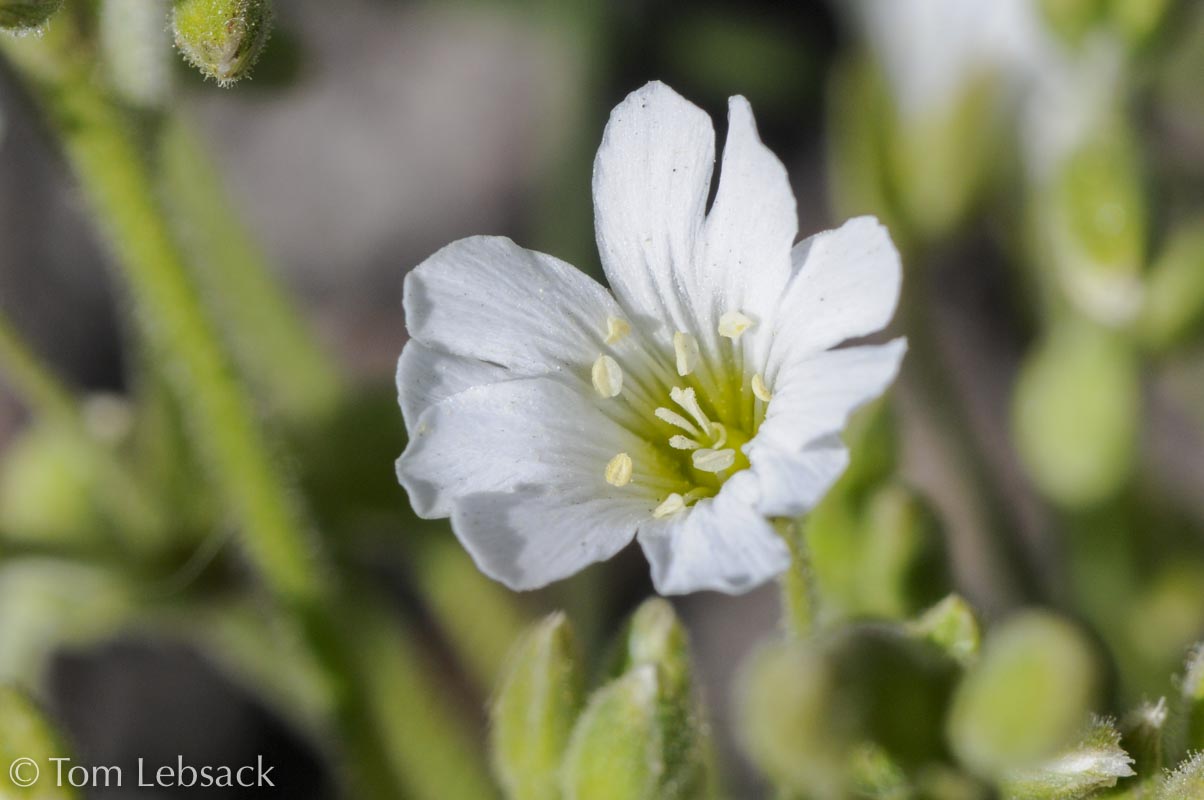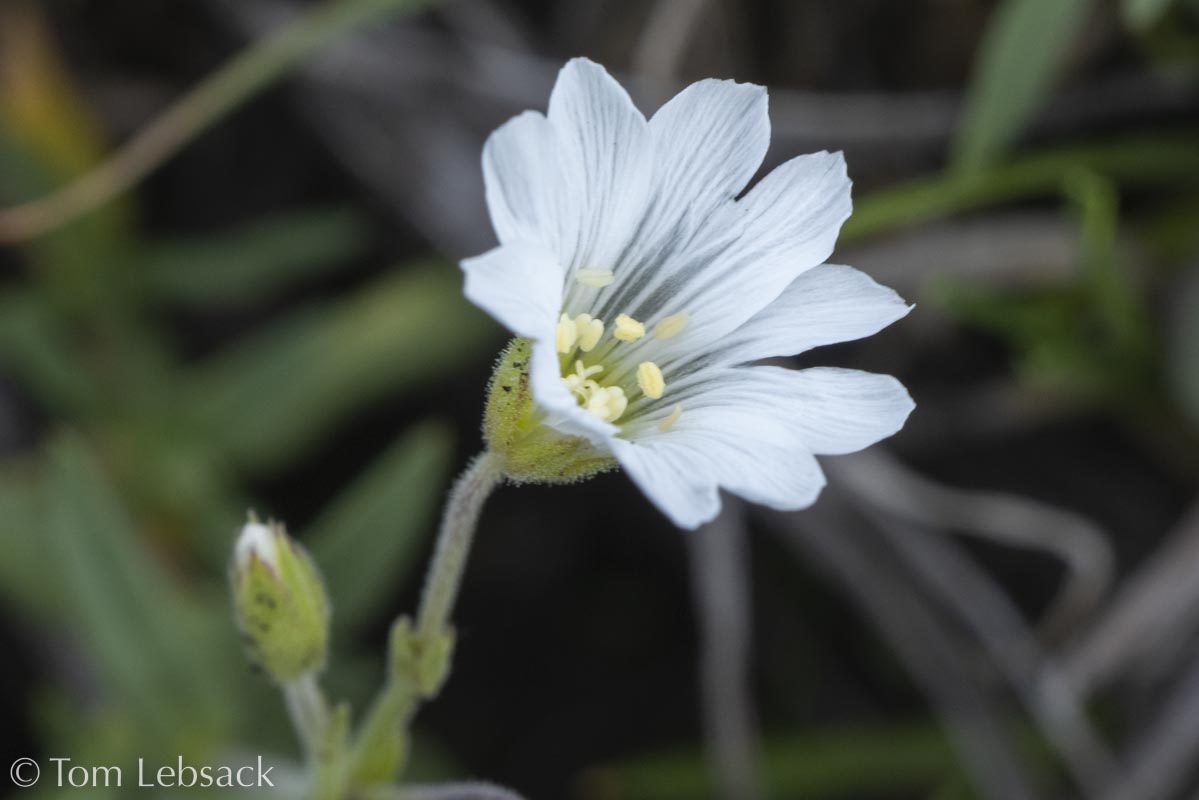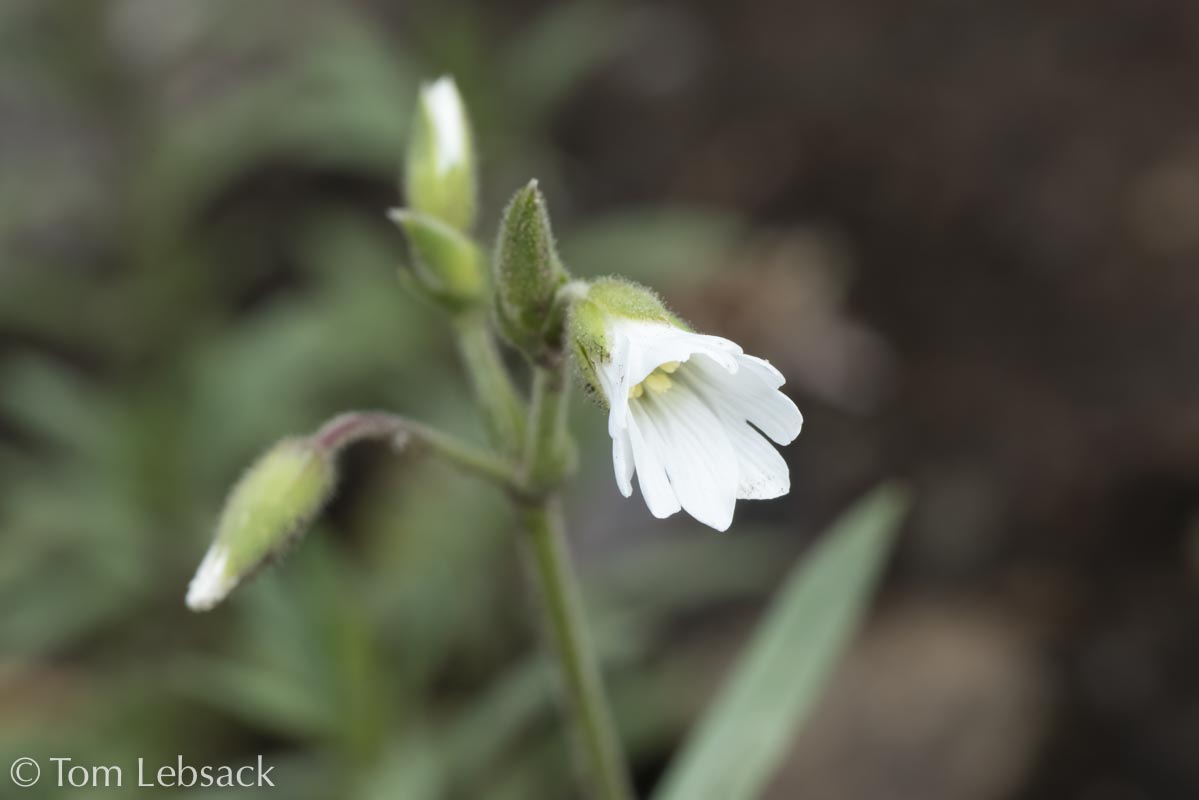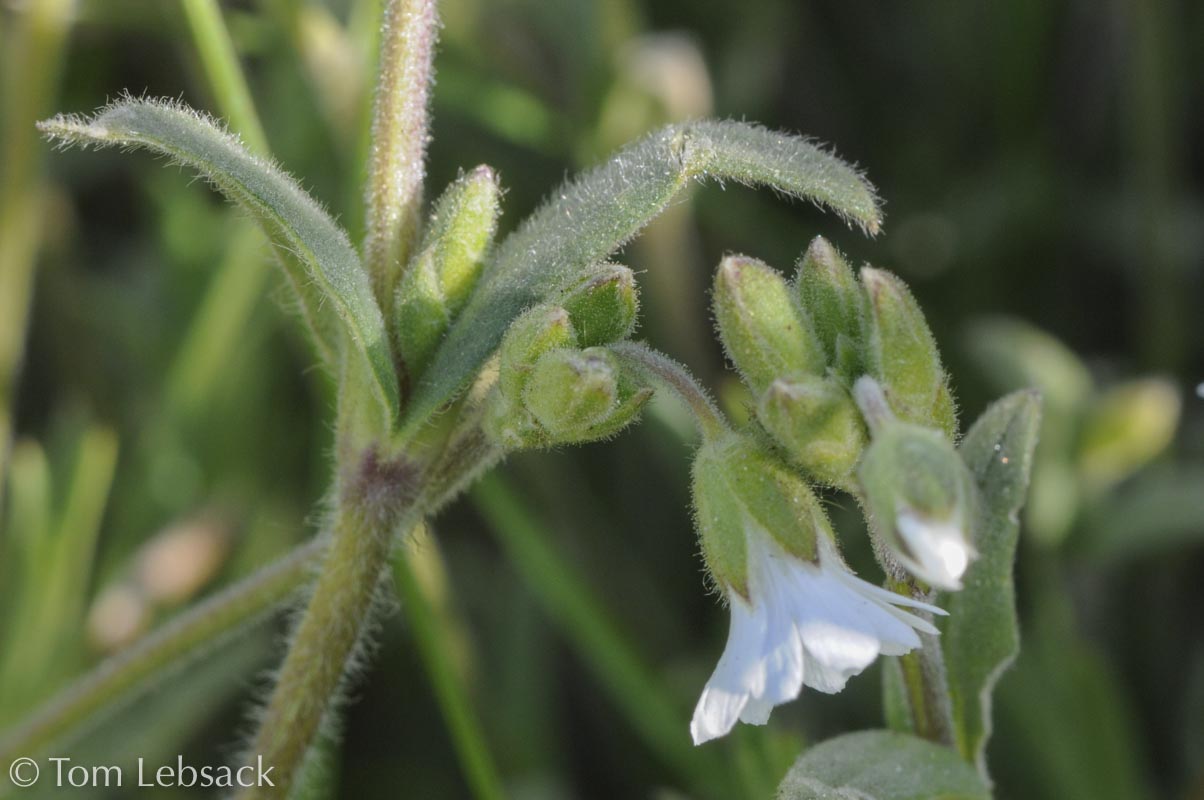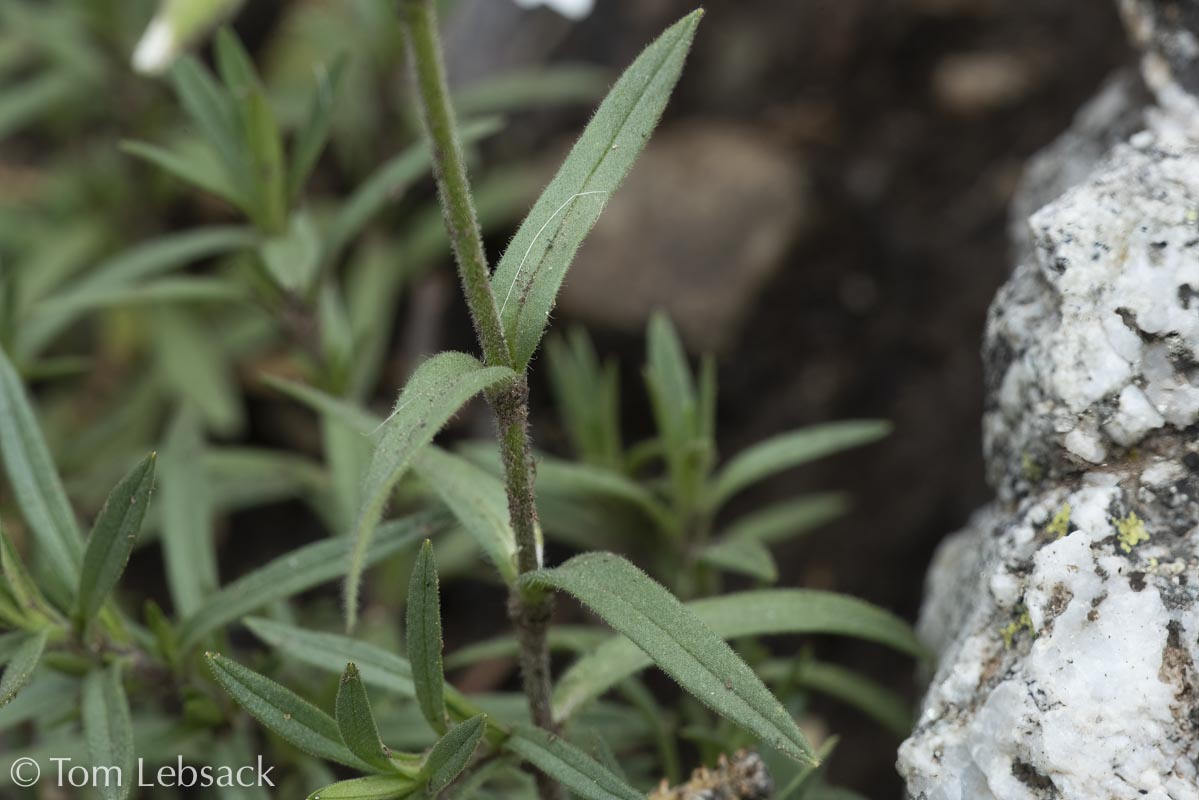Cerastium beeringianum
(Bering Chickweed)
| Scientific Name | Cerastium beeringianum | USDA PLANTS Symbol | CEBE2 |
| Common Name | Bering Chickweed, Bering Sea Mouse-ear Chickweed | ITIS Taxonomic Serial No. | 19944 |
| Family | Caryophyllaceae (Pink) | SEINet Reference | Click Here |
| Description |
Life zones and habitat: Montane to alpine (9500 to 14100 ft.); gravelly soils in meadows, tundra, open woodlands, talus and rocky slopes. Plant: Perennial in loose to dense clumps or mats with spreading and ascending stems, 2 to 8 inches tall; flowering stems are usually erect; lower stem portions are smooth often becoming densely pubescent further up and hairs may be glandular. Leaves: On the flowering stems the leaves are sessile and lanceolate, 0.2 to 0.8 inches long and less than 0.2 inches wide, with a pointed tip and covered with pubescent hairs; leaves on lower and nonflowering stems are petiolate, oblanceolate or spatulate with rounded tips, more or less pubescent and mostly not glandular. No small tufts of leaves in the axils. Inflorescence: Open cymes with 3 to 10 flowers on erect to nodding pedicels 0.2 to 1.2 inches long densely covered with glandular and eglandular hairs; sepals narrowly lanceolate to lanceolate elliptic, mostly about 0.2 inches long or less, usually covered with glandular hairs; corollas with 5 white petals equaling or (rarely) to 2 times as long as sepals, with deeply 2-lobed tips; 10 stamens and 5 styles. Bloom Period: June to August. References: "Flora of Colorado" by Jennifer Ackerfield, SEINet, Flora of North America and American Southwest. |
BONAP Distribution Map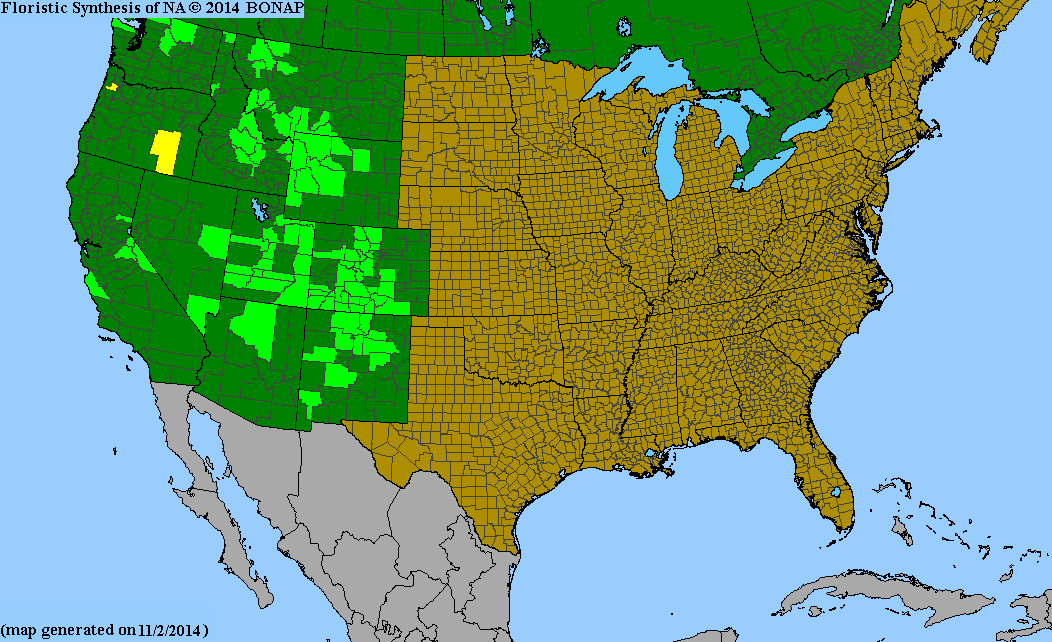 Map Color Key |
Colorado Status: Native |
© Tom Lebsack 2025
Banner photo: Castilleja rhexifolia and a brewing storm over the San Juan Mountains
I try to provide accurate, up-to-date, and relevant information, but cannot guarantee the completeness or accuracy of any information presented on this website. I use authoritative references to insure high standards of accuracy and review and update the information frequently.
